Xiangyu Shi
DS-ProGen: A Dual-Structure Deep Language Model for Functional Protein Design
May 18, 2025Abstract:Inverse Protein Folding (IPF) is a critical subtask in the field of protein design, aiming to engineer amino acid sequences capable of folding correctly into a specified three-dimensional (3D) conformation. Although substantial progress has been achieved in recent years, existing methods generally rely on either backbone coordinates or molecular surface features alone, which restricts their ability to fully capture the complex chemical and geometric constraints necessary for precise sequence prediction. To address this limitation, we present DS-ProGen, a dual-structure deep language model for functional protein design, which integrates both backbone geometry and surface-level representations. By incorporating backbone coordinates as well as surface chemical and geometric descriptors into a next-amino-acid prediction paradigm, DS-ProGen is able to generate functionally relevant and structurally stable sequences while satisfying both global and local conformational constraints. On the PRIDE dataset, DS-ProGen attains the current state-of-the-art recovery rate of 61.47%, demonstrating the synergistic advantage of multi-modal structural encoding in protein design. Furthermore, DS-ProGen excels in predicting interactions with a variety of biological partners, including ligands, ions, and RNA, confirming its robust functional retention capabilities.
Think in Safety: Unveiling and Mitigating Safety Alignment Collapse in Multimodal Large Reasoning Model
May 10, 2025Abstract:The rapid development of multimodal large reasoning models (MLRMs) has demonstrated broad application potential, yet their safety and reliability remain critical concerns that require systematic exploration. To address this gap, we conduct a comprehensive and systematic safety evaluation of 11 MLRMs across 5 benchmarks and unveil prevalent safety degradation phenomena in most advanced models. Moreover, our analysis reveals distinct safety patterns across different benchmarks: significant safety degradation is observed across jailbreak robustness benchmarks, whereas safety-awareness benchmarks demonstrate less pronounced degradation. In particular, a long thought process in some scenarios even enhances safety performance. Therefore, it is a potential approach to addressing safety issues in MLRMs by leveraging the intrinsic reasoning capabilities of the model to detect unsafe intent. To operationalize this insight, we construct a multimodal tuning dataset that incorporates a safety-oriented thought process. Experimental results from fine-tuning existing MLRMs with this dataset effectively enhances the safety on both jailbreak robustness and safety-awareness benchmarks. This study provides a new perspective for developing safe MLRMs. Our dataset is available at https://github.com/xinyuelou/Think-in-Safety.
SmartWay: Enhanced Waypoint Prediction and Backtracking for Zero-Shot Vision-and-Language Navigation
Mar 13, 2025Abstract:Vision-and-Language Navigation (VLN) in continuous environments requires agents to interpret natural language instructions while navigating unconstrained 3D spaces. Existing VLN-CE frameworks rely on a two-stage approach: a waypoint predictor to generate waypoints and a navigator to execute movements. However, current waypoint predictors struggle with spatial awareness, while navigators lack historical reasoning and backtracking capabilities, limiting adaptability. We propose a zero-shot VLN-CE framework integrating an enhanced waypoint predictor with a Multi-modal Large Language Model (MLLM)-based navigator. Our predictor employs a stronger vision encoder, masked cross-attention fusion, and an occupancy-aware loss for better waypoint quality. The navigator incorporates history-aware reasoning and adaptive path planning with backtracking, improving robustness. Experiments on R2R-CE and MP3D benchmarks show our method achieves state-of-the-art (SOTA) performance in zero-shot settings, demonstrating competitive results compared to fully supervised methods. Real-world validation on Turtlebot 4 further highlights its adaptability.
Large Language Models in Bioinformatics: A Survey
Mar 06, 2025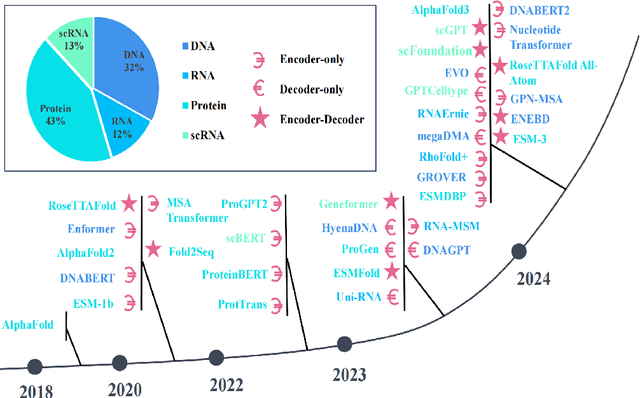
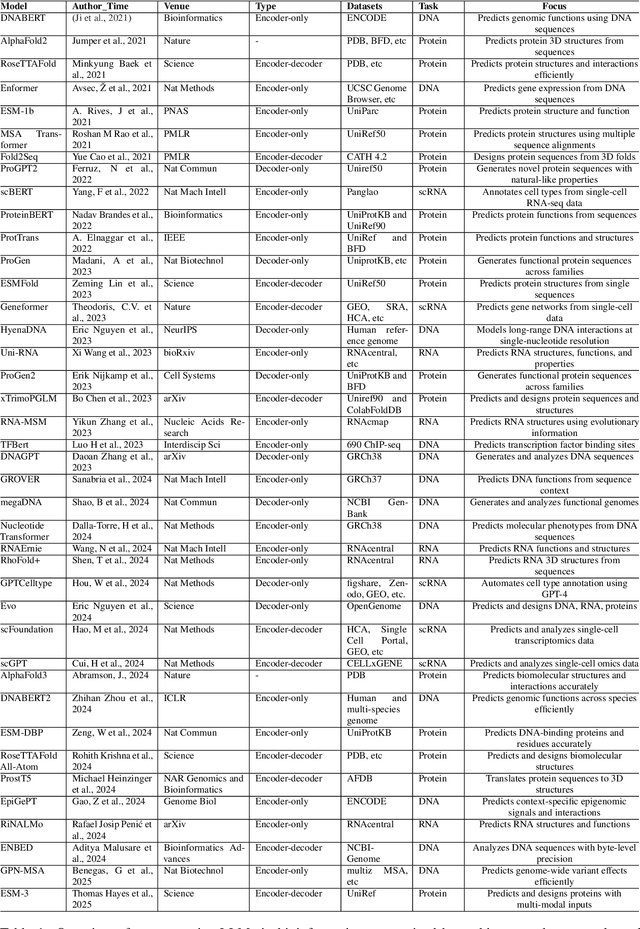
Abstract:Large Language Models (LLMs) are revolutionizing bioinformatics, enabling advanced analysis of DNA, RNA, proteins, and single-cell data. This survey provides a systematic review of recent advancements, focusing on genomic sequence modeling, RNA structure prediction, protein function inference, and single-cell transcriptomics. Meanwhile, we also discuss several key challenges, including data scarcity, computational complexity, and cross-omics integration, and explore future directions such as multimodal learning, hybrid AI models, and clinical applications. By offering a comprehensive perspective, this paper underscores the transformative potential of LLMs in driving innovations in bioinformatics and precision medicine.
EUR/USD Exchange Rate Forecasting incorporating Text Mining Based on Pre-trained Language Models and Deep Learning Methods
Nov 12, 2024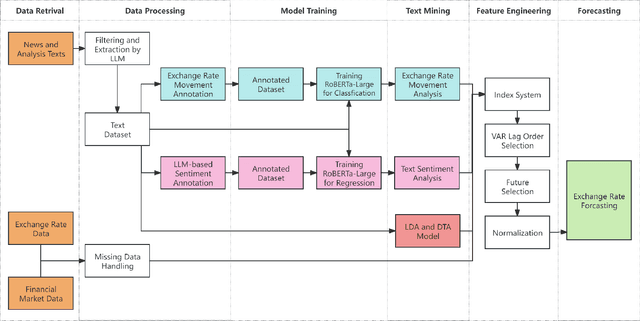
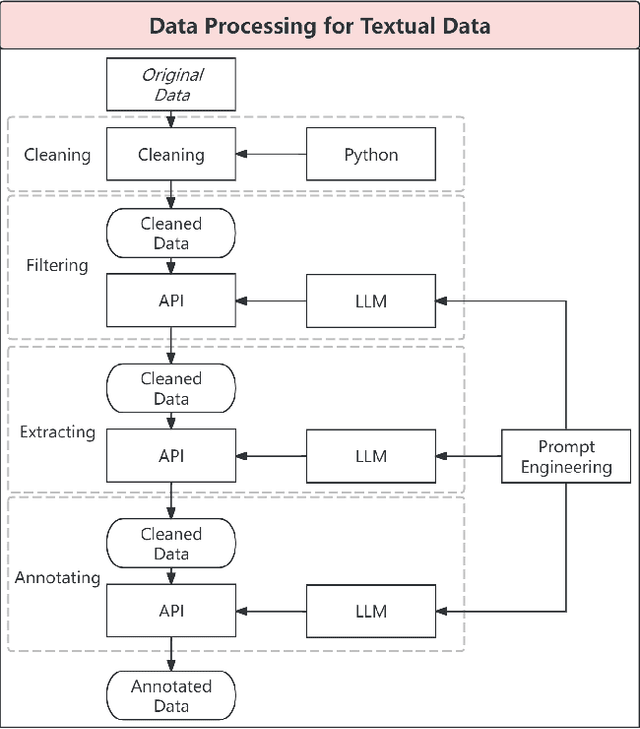
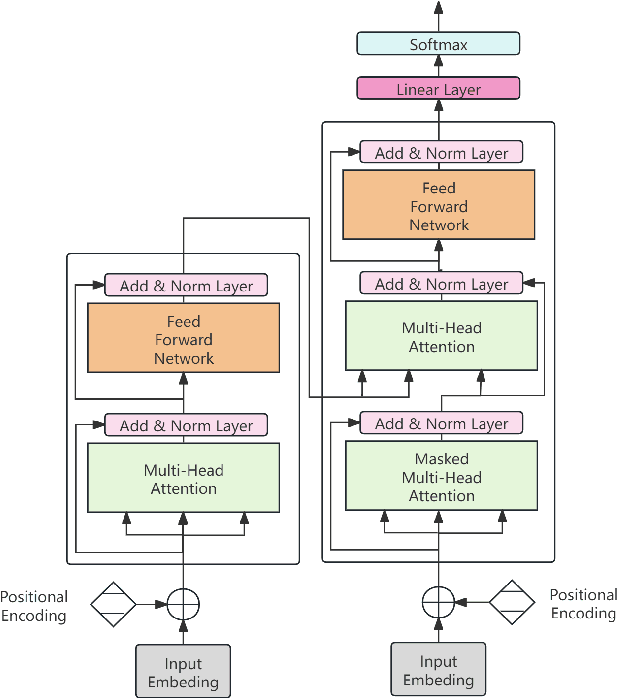
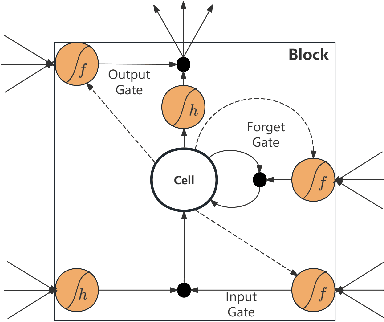
Abstract:This study introduces a novel approach for EUR/USD exchange rate forecasting that integrates deep learning, textual analysis, and particle swarm optimization (PSO). By incorporating online news and analysis texts as qualitative data, the proposed PSO-LSTM model demonstrates superior performance compared to traditional econometric and machine learning models. The research employs advanced text mining techniques, including sentiment analysis using the RoBERTa-Large model and topic modeling with LDA. Empirical findings underscore the significant advantage of incorporating textual data, with the PSO-LSTM model outperforming benchmark models such as SVM, SVR, ARIMA, and GARCH. Ablation experiments reveal the contribution of each textual data category to the overall forecasting performance. The study highlights the transformative potential of artificial intelligence in finance and paves the way for future research in real-time forecasting and the integration of alternative data sources.
TransportationGames: Benchmarking Transportation Knowledge of (Multimodal) Large Language Models
Jan 09, 2024Abstract:Large language models (LLMs) and multimodal large language models (MLLMs) have shown excellent general capabilities, even exhibiting adaptability in many professional domains such as law, economics, transportation, and medicine. Currently, many domain-specific benchmarks have been proposed to verify the performance of (M)LLMs in specific fields. Among various domains, transportation plays a crucial role in modern society as it impacts the economy, the environment, and the quality of life for billions of people. However, it is unclear how much traffic knowledge (M)LLMs possess and whether they can reliably perform transportation-related tasks. To address this gap, we propose TransportationGames, a carefully designed and thorough evaluation benchmark for assessing (M)LLMs in the transportation domain. By comprehensively considering the applications in real-world scenarios and referring to the first three levels in Bloom's Taxonomy, we test the performance of various (M)LLMs in memorizing, understanding, and applying transportation knowledge by the selected tasks. The experimental results show that although some models perform well in some tasks, there is still much room for improvement overall. We hope the release of TransportationGames can serve as a foundation for future research, thereby accelerating the implementation and application of (M)LLMs in the transportation domain.
Towards Faster k-Nearest-Neighbor Machine Translation
Dec 12, 2023



Abstract:Recent works have proven the effectiveness of k-nearest-neighbor machine translation(a.k.a kNN-MT) approaches to produce remarkable improvement in cross-domain translations. However, these models suffer from heavy retrieve overhead on the entire datastore when decoding each token. We observe that during the decoding phase, about 67% to 84% of tokens are unvaried after searching over the corpus datastore, which means most of the tokens cause futile retrievals and introduce unnecessary computational costs by initiating k-nearest-neighbor searches. We consider this phenomenon is explainable in linguistics and propose a simple yet effective multi-layer perceptron (MLP) network to predict whether a token should be translated jointly by the neural machine translation model and probabilities produced by the kNN or just by the neural model. The results show that our method succeeds in reducing redundant retrieval operations and significantly reduces the overhead of kNN retrievals by up to 53% at the expense of a slight decline in translation quality. Moreover, our method could work together with all existing kNN-MT systems.
Improving Online Source-free Domain Adaptation for Object Detection by Unsupervised Data Acquisition
Oct 30, 2023Abstract:Effective object detection in mobile robots is challenged by deployment in diverse and unfamiliar environments. Online Source-Free Domain Adaptation (O-SFDA) offers real-time model adaptation using a stream of unlabeled data from a target domain. However, not all captured frames in mobile robotics contain information that is beneficial for adaptation, particularly when there is a strong domain shift. This paper introduces a novel approach to enhance O-SFDA for adaptive object detection in mobile robots via unsupervised data acquisition. Our methodology prioritizes the most informative unlabeled samples for inclusion in the online training process. Empirical evaluation on a real-world dataset reveals that our method outperforms existing state-of-the-art O-SFDA techniques, demonstrating the viability of unsupervised data acquisition for improving adaptive object detection in mobile robots.
Audio compression-assisted feature extraction for voice replay attack detection
Oct 10, 2023



Abstract:Replay attack is one of the most effective and simplest voice spoofing attacks. Detecting replay attacks is challenging, according to the Automatic Speaker Verification Spoofing and Countermeasures Challenge 2021 (ASVspoof 2021), because they involve a loudspeaker, a microphone, and acoustic conditions (e.g., background noise). One obstacle to detecting replay attacks is finding robust feature representations that reflect the channel noise information added to the replayed speech. This study proposes a feature extraction approach that uses audio compression for assistance. Audio compression compresses audio to preserve content and speaker information for transmission. The missed information after decompression is expected to contain content- and speaker-independent information (e.g., channel noise added during the replay process). We conducted a comprehensive experiment with a few data augmentation techniques and 3 classifiers on the ASVspoof 2021 physical access (PA) set and confirmed the effectiveness of the proposed feature extraction approach. To the best of our knowledge, the proposed approach achieves the lowest EER at 22.71% on the ASVspoof 2021 PA evaluation set.
AutoMC: Automated Model Compression based on Domain Knowledge and Progressive search strategy
Jan 24, 2022



Abstract:Model compression methods can reduce model complexity on the premise of maintaining acceptable performance, and thus promote the application of deep neural networks under resource constrained environments. Despite their great success, the selection of suitable compression methods and design of details of the compression scheme are difficult, requiring lots of domain knowledge as support, which is not friendly to non-expert users. To make more users easily access to the model compression scheme that best meet their needs, in this paper, we propose AutoMC, an effective automatic tool for model compression. AutoMC builds the domain knowledge on model compression to deeply understand the characteristics and advantages of each compression method under different settings. In addition, it presents a progressive search strategy to efficiently explore pareto optimal compression scheme according to the learned prior knowledge combined with the historical evaluation information. Extensive experimental results show that AutoMC can provide satisfying compression schemes within short time, demonstrating the effectiveness of AutoMC.
 Add to Chrome
Add to Chrome Add to Firefox
Add to Firefox Add to Edge
Add to Edge